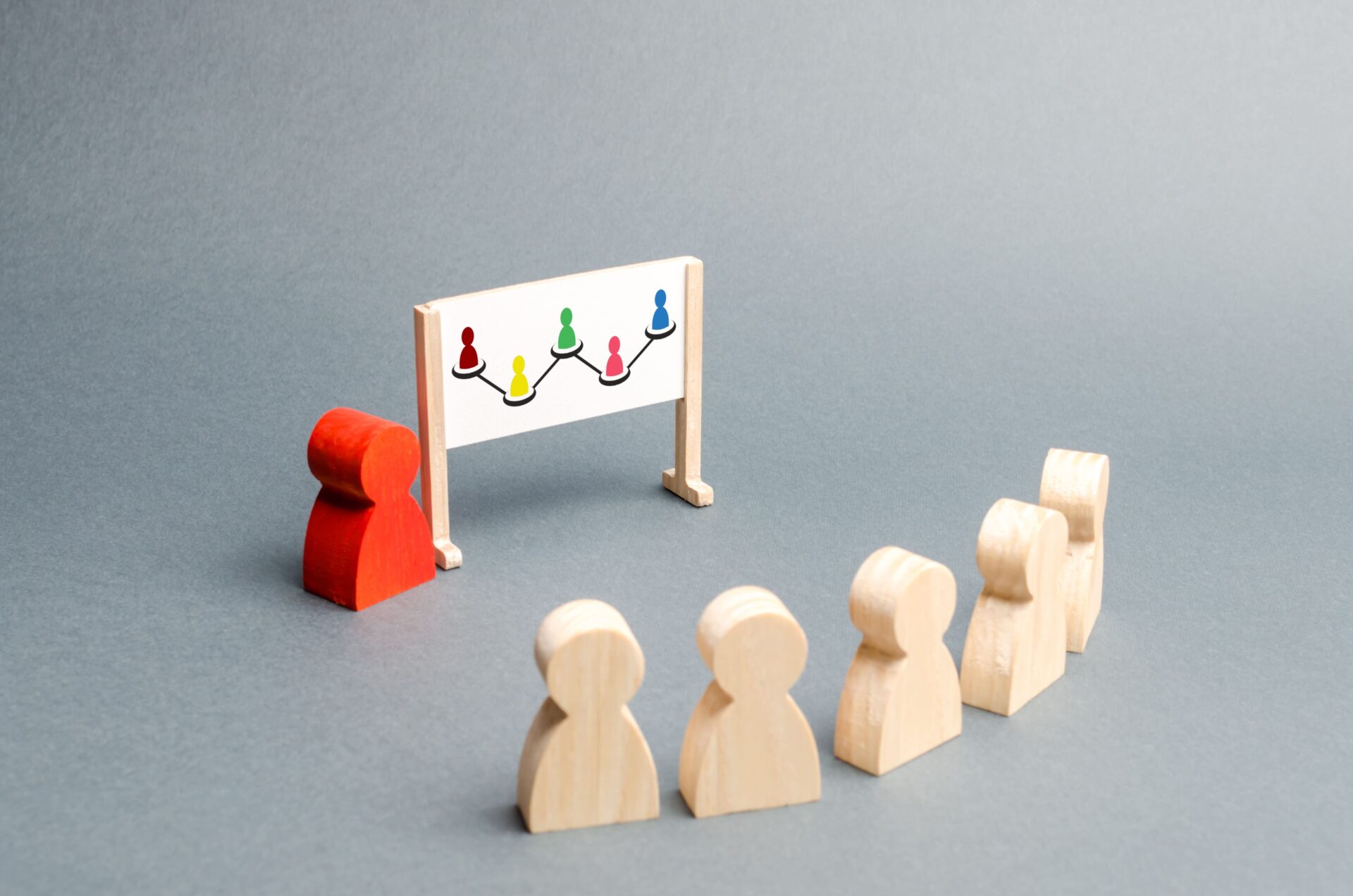Product Roadmaps Unveiled: The Ultimate Guide for Designers and Business Leaders

Introduction to Product Roadmap
Imagine a world where your product is always moving forward, where you know exactly what you need to do to achieve your goals. That’s the power of a product roadmap.
In today’s fast-paced and ever-changing business world, it’s more important than ever to have a clear and concise plan for your product. A product roadmap can help you to define your goals, prioritize your features, and stay on track to achieve your vision.
What are product roadmaps?
A product roadmap is a visual representation of a product’s development plan, highlighting key milestones, timelines, and stakeholders involved in the project. It helps you align the product team and stakeholders, set priorities, and communicate the product strategy to various audiences. It communicates the why and what behind what you’re building. The roadmap typically includes a high-level overview of the product’s life cycle, including its launch, maturity, and sunset phases. By providing a clear visibility into the product’s development, a roadmap helps to ensure that the product is delivered on time and meets the desired business objectives.

The main goals of a product roadmap are to:
- Ensure all team members and stakeholders are aligned with the product objectives
- Providing a clear, shared vision of the product’s development and future direction.
- Provide a guiding document for executing the strategy
- Efficiently allocate resources to high-priority tasks
- Adapt the roadmap to market changes and feedback
Why do I need a product road map for my business?
Product roadmaps turn strategy into reality, focusing on what truly matters while inspiring and aligning everyone in the organization towards common goals. They provide a clear direction and prevent chaos, ensuring resources are wisely invested.
Usually, you will have the following signs in your business that it’s time to explore a product strategy.
- Either you can’t articulate how you’ll grow
- Or your current strategy is not making any significant impact on the team and the product.
To scale and grow my business
If you want to expand your product’s reach in your market and among your users, a product growth strategy helps guide your product and positioning.
A product strategy serves two benefits for your product growth:
- More revenue
- More insights
Take the instance of a shoe company’s product strategy that can drive its growth. If the company focuses on making high-quality, comfortable shoes at affordable prices, it attracts customers and stands out. With this strategy, the company can make decisions about new products or discounts, attracting more customers, increasing sales, and growing its brand.

To build more user centric products
A product strategy helps you define your priorities and serves as a game plan for how you’ll meet customer needs. It is based on understanding your customers’ needs, identifying market trends, and aligning product development with business goals. This implies understanding your users’ problems, goals, and pain points, and then designing products that solve their problems and help them achieve their goals in a way that is easy and enjoyable.
To engage more users
To reach more customers in your current market, you need to attract more users. You can do this by targeting new groups of people in the same market, or by getting more of the same types of customers you already have.
Product strategy can help engage more users by:
- Identifying market gaps and opportunities
- Creating a tailored user experience
- Iterating based on customer feedback.
By focusing on the user and creating a compelling product experience, your business can increase adoption, retention, and overall engagement.
To disrupt and innovate
When you want to focus on innovation for your product, a product roadmap can be a powerful tool. To drive innovation and disruption in your business following are a few things you need to keep in mind:
- Have a clear vision in your strategy regarding what problems you want to solve or what value you want to provide.
- Prioritize strategic initiatives where you could leverage on emerging technologies, explore new markets or address new customers.
- Give space for experimentation in your roadmap.
- Divide initiatives into smaller parts, prioritize them using customer feedback and market trends, and stay flexible to seize new opportunities.
- Collect feedback, gather insights, and foster a collaborative culture where diverse perspectives are encouraged.
- Measure how your product is disrupting the market and driving innovation. Use these insights to refine and adjust your roadmap over time.

To optimize resource allocation and budgeting
A product roadmap provides a clear and concise overview of the product’s vision and goals. This can help your stakeholders to understand the priorities and to make informed decisions about how to allocate resources. It also helps you estimate the resources required for each feature or initiative and track progress and make adjustments as needed.
By visualizing the product journey and allocating resources accordingly, you can make informed decisions about where to invest your budget, when to release new features, and how to maximize ROI.
To reduce waste
We saw earlier some of the most important pointers for a successful roadmap include a clear vision and effective communication within the team. The feedback on your product roadmap from the stakeholders are extremely valuable and help you to identify any potential areas for waste.
Here are a few ways to reduce waste using a product roadmap:
- Focus on the most important features and initiatives.
- Validate features and initiatives before investing too much time and resources.
- Set realistic deadlines and expectations to avoid the need to rush through development, which can lead to quality issues and wasted resources.
- Be flexible and adaptable with your product roadmap and adjust your plans as needed.

How can the product roadmap promote cross-functional collaboration between design, development, and marketing teams?
Cross-functional collaboration ensures diverse perspectives, shared goals, and streamlined communication within a team. It leads to higher innovation and customer satisfaction.
Cross-functional teamwork is a key ingredient in the success stories of major companies:
- Apple achieves innovation by having designers, engineers, marketers, and more working together, leading to groundbreaking products like the iPhone and iPad.
- Amazon’s collaboration across teams drives their dominance in e-commerce and expansion into new ventures like cloud computing.
- Toyota’s production system’s core is cross-functional collaboration, eliminating waste, and making them a top auto manufacturer.
- Microsoft united the Windows and Office teams to create a seamless user experience in Windows 95, demonstrating the power of teamwork.
A product roadmap unites design, development, and marketing teams around shared goals. It ensures they work together, not separately, improving product quality and speed. For instance, if a roadmap says we need a new feature, all teams collaborate to make it happen, sharing insights for a successful launch.
Why is design-driven innovation essential for a successful product strategy in my business?
Design plays a crucial role in product strategy as it influences how users interact and perceive a product. It can help you create an intuitive and user-friendly experience, differentiate a product from competitors, and ultimately drive business success. Effective design can also facilitate iterative development and testing, ensuring that your final product meets user needs and business goals. By prioritizing design in product strategy, you can create products that are not only aesthetically pleasing but also highly functional and user-friendly.
Why do my business need to transition from generic roadmaps to design-centered ones for enhanced user satisfaction and profitability?
Transitioning from generic roadmaps to design-centered ones can enhance user satisfaction and profitability for businesses by prioritizing the user experience and iterative design processes. Design-centered roadmaps focus on creating products and services that are intuitive, user-friendly, and meet the specific needs of customers. This approach can lead to increased customer satisfaction, loyalty, and ultimately, profitability. By investing in design-centered roadmaps, businesses can differentiate themselves from competitors and create a sustainable competitive advantage.
How can design thinking help me build a robust product strategy?
Design thinking benefits product strategy development by fostering a human-centered approach that prioritizes empathy, experimentation, and collaboration. By understanding the needs and desires of users through design sprints, prototyping, and testing, you can create a more robust and adaptable product strategy that resonates with your target audience. Additionally, design thinking encourages a culture of continuous improvement, allowing you to iterate and refine your strategy as you gather feedback and insights from users.
Why do I need a design studio to build a product strategy?
To understand why you need a design studio for your product, you must understand what is at stake. While no company deliberately makes incorrect investment choices, these decisions can occasionally occur, putting the product at risk.
A design studio can significantly contribute to building a product strategy by providing valuable insights on the design aspect and align those with business objectives of your product. A product UX roadmap, directly influences user satisfaction, competitive positioning, business success, resource efficiency, brand reputation, and market share.
Collaborating with a suitable design agency can significantly mitigate these issues. Here’s why you need the help of a design studio and how it adds value:
- A design studio brings in a deep understanding of design thinking and UX ensuring that the product roadmap aligns with user needs and business goals.
- They introduce creative and innovative ideas that can transform the user experience, making the product more viable in the market.
- The product roadmap can prioritize user-centric design, making the product more appealing and effective.
- With the design studio’s guidance, the product roadmap can be executed more efficiently, reducing time to market.
- A design studio helps maintain a consistent and high-quality user experience throughout the product’s lifecycle.
How can a design studio help build a product strategy?
A design studio is like a guide that helps build a clear plan for your product. They find ways to make your product better and ensure it helps your business succeed by facilitating user research, user experience (UX) design, and visual design to create a cohesive and effective product roadmap. By understanding the needs and preferences of users, design studios can help identify opportunities for innovation and improvement, ensuring the product is user-friendly, efficiently designed, and meets business goals.
Creating a product roadmap
In which stage of the design process is a product roadmap created?
A product roadmap is typically created in the early stages of the design process, often during the product planning phase. The roadmap helps bridge the gap between business strategy and design by setting clear goals and guiding the design and development teams.

Who creates a product roadmap? Who all are the stakeholders involved?
The major responsibility for creating a product roadmap lies with the product managers/owners, however it is achieved with the collaborative effort of a cross-functional team, including UX designers, developers, and key stakeholders from various departments. This approach ensures that the roadmap aligns with business goals, incorporates user-centric design, and is feasible to implement. The involvement of stakeholders from the different areas such as marketing, sales, and customer support is crucial to gather valuable input and maintain a holistic perspective throughout the product development journey.
What KPIs should we monitor to measure the success of our product roadmap in achieving business goals?
KPIs set clear targets, inform decisions, track success, and highlight risks. Without them, understanding progress, learning from work, and prioritizing can be challenging. It is important to choose the right set of KPIs for your product roadmap as they establish a measurable set of indicators for the product managers to assess the success of their initiatives. Here are some KPIs that you should define when creating a product roadmap:
Business management KPIs:
- Customer counts
- Market positioning
- NPS (Net promoter score)
Product KPIs
- Monthly users
- Average number of sessions per user
- Users per feature
- Time to complete a task
Product development KPIs
- On-time delivery
- Effective resource utilization
- Team velocity
Product quality KPIs
- Number of support tickets
- Number of support ticket escalations
- Defect rate
Best-practices to create a road map

- Start with well-defined product goals and objectives.
- Collaborate with cross-functional teams and involve the key stakeholders.
- Prioritize the features.
- Align the roadmap as per the user-experience requirements
- Allow room for changes and adaptability.
- Keep it visual as they are easier to comprehend and communicate.
- Keep stakeholders updated on progress.
- Continuously assess and refine your roadmap.
- Ensure that user experience considerations are integrated.
- Set realistic timelines.
What are the dos and don’ts while creating a roadmap
Dos
- Make sure everyone on the team knows how to read the map
- Focus on results and impact created
- Use customer feedback to guide your roadmap decisions
- Keep the roadmap flexible to adapt to changes.
- Set goals for each feature on your roadmap
Don’ts
- Have too many versions of your roadmap floating around.
- Make the roadmap too detailed or rigid.
- Overcommit to unrealistic timelines.
- Forget to communicate progress with the team members.
- Treat your roadmap as a to-do list rather than a strategic document.
What is the future of product roadmaps?
Traditional product roadmaps are often managed undemocratically, driven by a select few senior team members. Transforming this approach with UX design innovation, experimentation, and consistent growth is key.
A democratized product roadmap thrives on data, user experience, experimentation, and feedback. It sparks increased innovation, higher product quality, and enhanced team engagement. Incorporating customer insights and feedback is vital. Internal teams should participate in decision-making to ease leadership pressure and foster innovation. Access to real-time data is essential, ensuring a dynamic process. A democratic stack, powered by AI for data analytics, supports this transformation. This roadmap encompasses elements from idea generation to experiment design, data integration, automated analysis, and reporting.
Achieving a democratic UX-focused roadmap is an ongoing journey, requiring support, focus, and the right tools. It demands the right blend of organizational support, steady focus on user experience, and the utilization of powerful tools. This will ensure that the path forward is rooted in the evolving needs and preferences of your users, making it a crucial element in a successful product strategy.